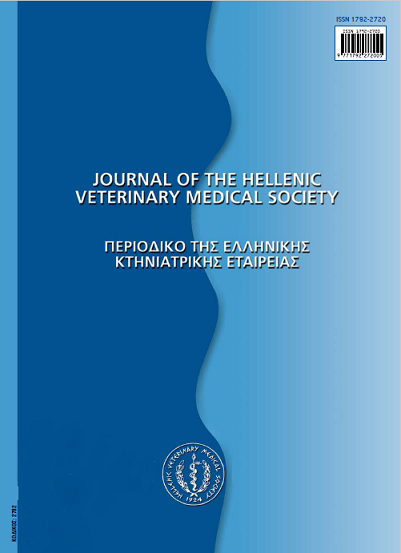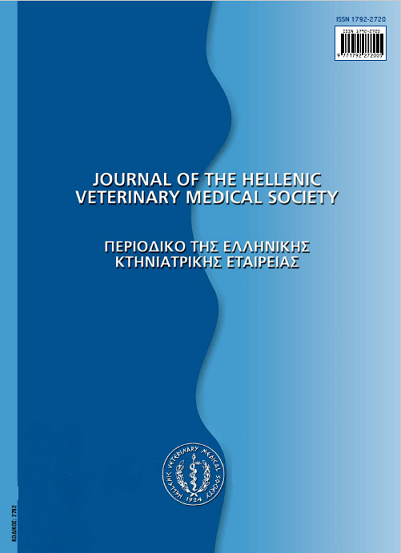Surgical management of screw tail and tail fold pyoderma in dogs

Abstract
Screw tail is an abnormal deviation of the terminal coccygeal vertebrae resulting in tail fold pyoderma. This condition is commonly met in brachycephalic breeds, especially English bulldogs. Tail fold pyoderma, the end result of skin maceration and bacterial colonization, may create pain and discomfort in these dogs. Local antibacterial combined with systemic antibiotic therapy are aiming at decreasing the number of surface bacteria of the skin and alleviate clinical signs before surgery. Complete caudectomy will lead in permanent resolution of clinical signs with minimal complications.
Article Details
- How to Cite
-
VASIADOU, C., & PAPAZOGLOU, L. G. (2018). Surgical management of screw tail and tail fold pyoderma in dogs. Journal of the Hellenic Veterinary Medical Society, 67(4), 205–210. https://doi.org/10.12681/jhvms.15640
- Issue
- Vol. 67 No. 4 (2016)
- Section
- Review Articles

This work is licensed under a Creative Commons Attribution-NonCommercial 4.0 International License.
Authors who publish with this journal agree to the following terms:
· Authors retain copyright and grant the journal right of first publication with the work simultaneously licensed under a Creative Commons Attribution Non-Commercial License that allows others to share the work with an acknowledgement of the work's authorship and initial publication in this journal.
· Authors are able to enter into separate, additional contractual arrangements for the non-exclusive distribution of the journal's published version of the work (e.g. post it to an institutional repository or publish it in a book), with an acknowledgement of its initial publication in this journal.
· Authors are permitted and encouraged to post their work online (preferably in institutional repositories or on their website) prior to and during the submission process, as it can lead to productive exchanges, as well as earlier and greater citation of published work.



